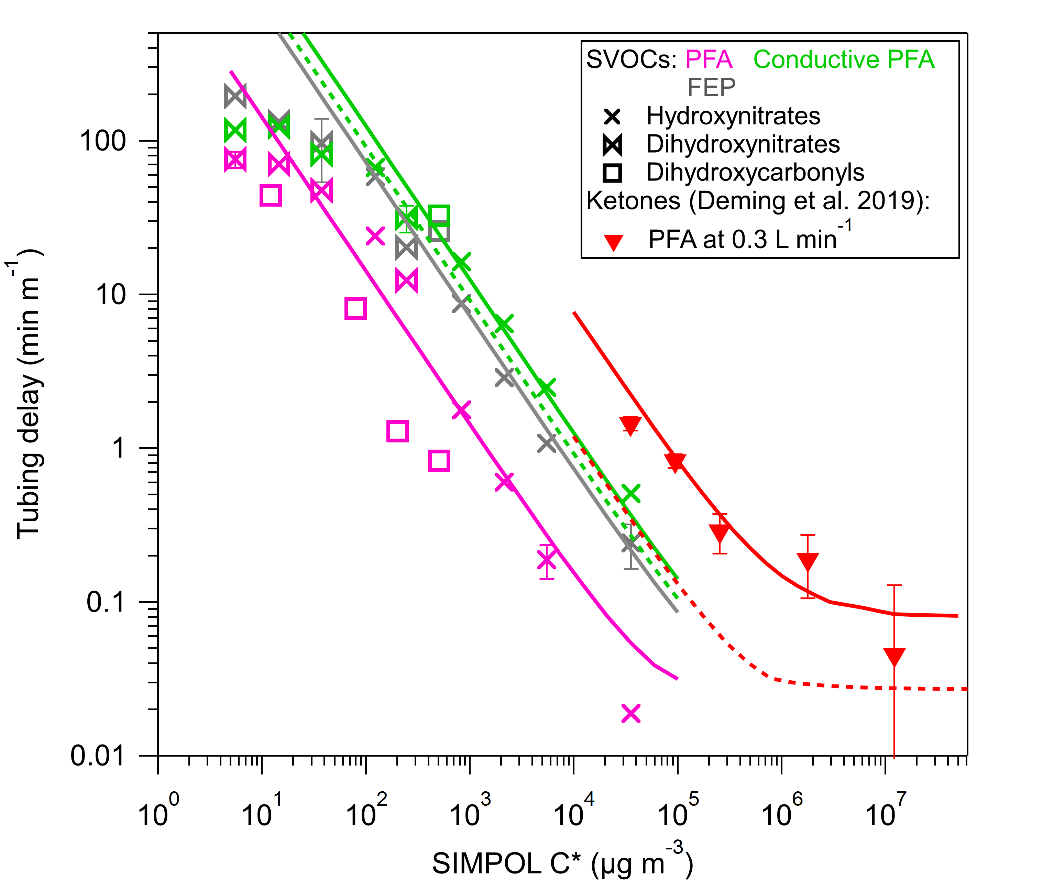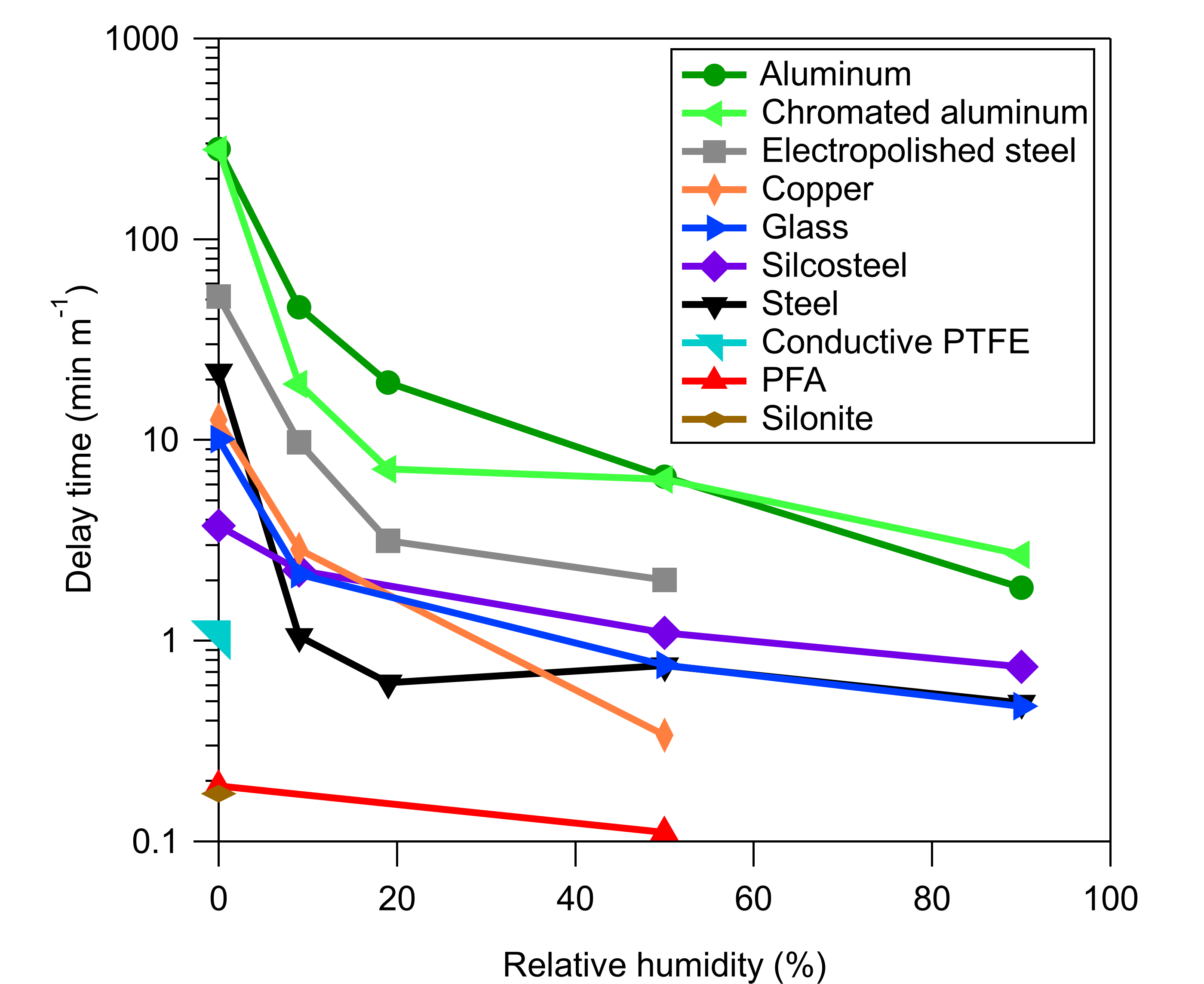Partitioning of organic gases to tubing: Measurements, modeling, and software for lab and field sampling
Submitter
Jimenez, Jose-Luis — University of Colorado
Ziemann, Paul J — University of Colorado
Area of research
Aerosol Processes
Journal Reference
Science
A variety of tubings commonly used for gas and aerosol sampling in laboratory and field measurements in the atmospheric community were tested to determine sampling delays and partitioning mechanisms for organic gases with a wide range of volatilities and functionalities. Delays were quantitatively characterized as a function of volatility and tubing materials, which can be used in the design of sampling systems, modeled and deconvolved to reconstruct unaltered time profiles, etc. Instrument delays were also characterized for commonly used instruments (e.g., PTRMS, I-CIMS, NO3--CIMS).
Impact
This work brings to experimentalists’ attention important effects that need to be considered when sampling a wide range of organic compounds that are relevant to gas and particle analysis in atmospheric research. Parameterizations and an easy-to-use software tool (https://tinyurl.com/PartitioningDelays) are provided that will help to design instruments and sampling configurations and interpret measurements.
Summary
Interactions with tubing can significantly affect time-resolved gas measurements as well as particle measurements where gas and particles are in equilibrium (such as secondary organic aerosol). We have characterized multiple types of tubing (plastic, glass, metals), all of which show a delay that increases ten-fold as C* (saturation vapor pressure) decreases ten-fold. PFA Teflon was the best choice for the species tested (spanning 7 orders of magnitude in C*), with Silonite-coated steel being nearly comparable except for the lowest-volatility species (where it shows some irreversible loss). Absorption controls these delays for plastic materials. Small polar molecules behave differently than larger organic ones, with delays predicted by Henry’s law constants (solubility in water) instead of C*. Glass and metal show very different phenomenology due to adsorptive partitioning to finite surface sites, which can lead to selective displacement by different compounds as well as dependencies on RH, concentration, molecular functionality, and tubing history. Instruments and their built-in inlets display similar behaviors and can be characterized similarly. These processes can lead to a range of sampling artifacts such as sampling delays, blurring of temporal variability, changes in apparent relative compositions of mixtures of molecules, and/or complete loss of lower-volatility compounds. Overall results suggest that conductive PFA and Silonite-coated steel may be best for sampling gas and particles simultaneously. We have developed publically available software for modeling tubing delay and signal deconvolution (https://tinyurl.com/PartitioningDelays).



